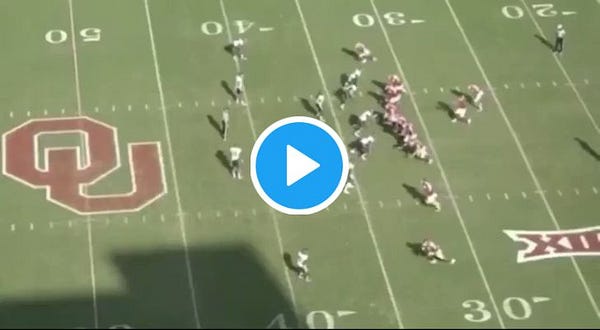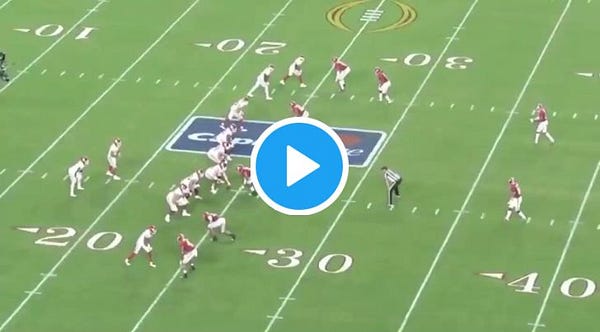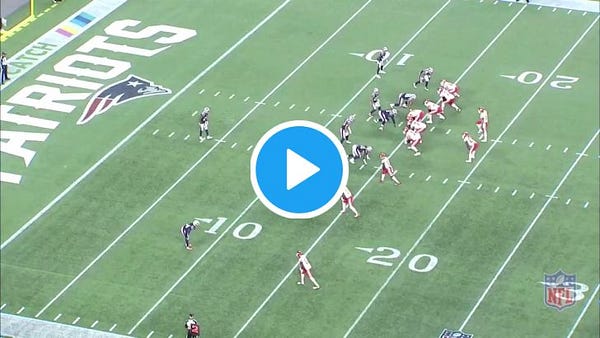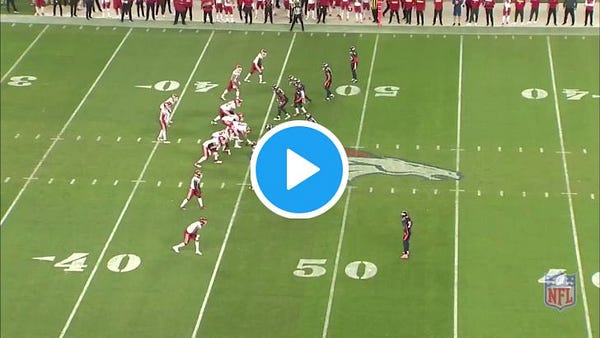Chiefs’ mesh concept
The mesh concept, which consists of two receivers running parallel to each other across the middle of the field, was first brought to prominence by air raid teams (https://drive.google.com/drive/folders/1AdhKIkSoOAhl3eVcAIxNY9dlWfbIGFT8). However, over the last few years it has arguably become the most popular pass concept at all levels of football. The main reason is likely due to its simplicity and versatility.
The key idea behind mesh is to create a rub for the underneath shallow cross receiver. This is why teams place a heavy emphasis on the two receivers being close to each other as that will force the defender covering the underneath receiver to run over the top. This is why you will occasionally see the two receivers high five as they cross, particularly when you’re watching Oklahoma run it.
The receiver that runs the ‘over’ shallow cross is said to set the depth of the mesh, which is usually around 5 yards. The receiver that runs the ‘under’ shallow cross is said to set the mesh as he is responsible for making the ‘over’ shallow cross receiver right: if he runs it at 7 yards, the ‘under’ receiver has to run it at ~6 yards etc.
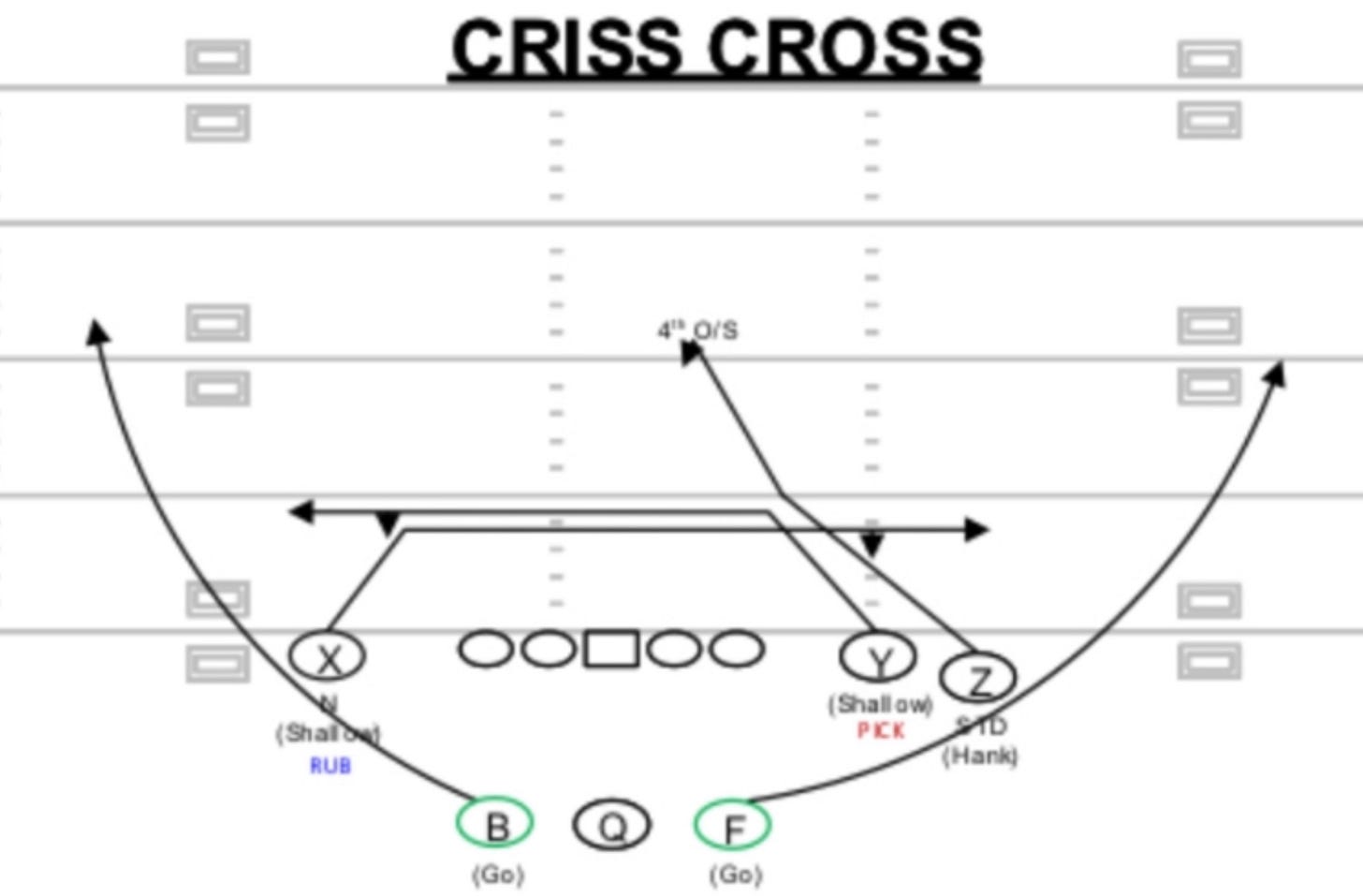




The only NFL team that I’ve seen that actually calls it mesh are the Saints
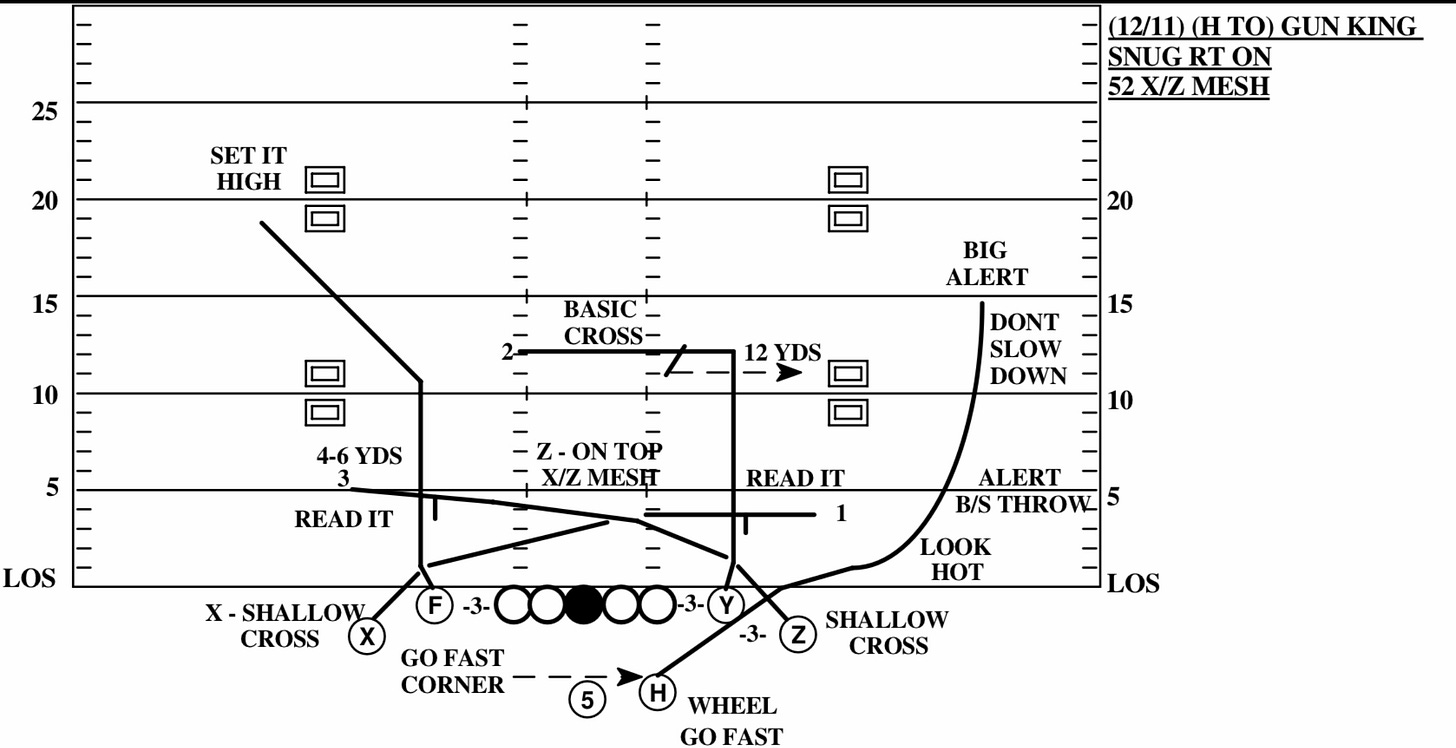
Every offense has different rules for how the receivers should sit down when a defender doesn’t run with them across the field. The most common way for air raid offenses is to have the receivers sit down in the first window after they complete the mesh unless they see space near the opposite sideline.
For the majority of teams the mesh is the second read as the quarterback usually reads some intermediate route first. This route changes a lot. The two main ways that OU run it are with an out as the first read
or a hunt (dig with the option to sit down in first window, resulting in it looking like a curl a lot of the time) as part of a dagger concept-
In earlier years, WSU liked running it with 2 RB’s in the backfield and having the out as the first read. A play that they’ve used a decent bit over the last few years is having the #1 receiver run a glance post rather than out route. They particularly like using this in the red zone. They also have their own way to run ‘dagger mesh’, but with the clear out route being a rail route and the same hunt route but with a speed cut as he aligns wider than OU align him.
However, the main way that I’ve seen non-air raid teams run mesh is with a rail route as the first read. As Kyle Shanahan explains, a rail route is essentially a slot fade, but usually ran from the backfield.
A great example of this is Alabama as they run mesh quite often, but always with the rail as the first read. Like every team that runs it with a rail as the first read, they have what some call ‘mesh triangle’ or ‘mesh sit’ in the MOF, which simply consists of both the shallow cross routes and a sit route. The quarterback reads from rail, to under mesh (which always originates away from the back), and then to the sit route. The sit route always sits over the ball and is open very often if the rail and shallow were not as the defense usually has to disperse to cover them.

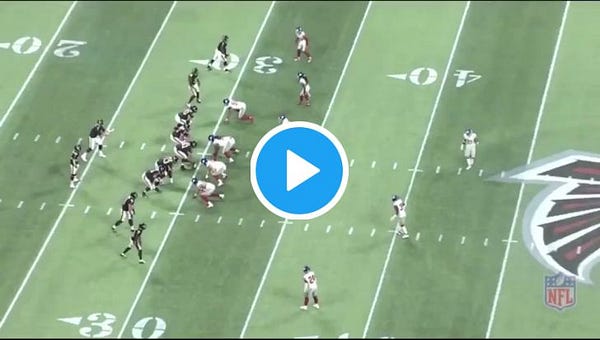
I was surprised that the Chiefs only ran mesh in its true form six times in the 2018 season as they’re the most pass happy offense in the NFL- in another article I will analyze how they ran mesh pivot. However, their usage increased to 21 times in 2019. A lot of these examples came against man heavy defenses like the Lions, Patriots, Colts, and Texans. This is because mesh is generally best against man coverage as it creates the aforementioned rub for the underneath shallow cross as the defender is responsible for running with the receiver across the field.
The Chiefs had two main ways to run mesh. Again, note that with both of them the mesh is the second read. In both examples the back had a free release


They liked using both of them, particularly the sit variation, predominantly in the red zone.
The sit variation is very similar to Alabama’s but with the number #1 receiver on the backside running a post rather than corner. But as both of these routes are clear out routes, it doesn’t matter as long as the route is vertical.
Another difference between the way they ran ‘mesh sit’ and the Alabama runs it, is that the back’s route with Alabama is a lot more vertical than with the Chiefs. I think part of this is because the Chiefs preferred to get the ball to the back and let him run after the catch, rather than target him downfield. This may change with Clyde Edwards-Helaire at running back.
After watching how the Eagles ran mesh when Chip Kelly was their head coach, it’s clear that Andy Reid got the play from him as everything is essentially the same. The only differences I saw was that the Eagles pre-dominantly slid away from the back, while the Chiefs pre-dominantly slid towards the back. I think sliding away from the back makes more sense as that will be the quarterbacks blindspot , and it will take four to be hot to that side. While, if there’s three rushers to the back he will be hot but he should be able to get it to the back quickly.
The other difference I saw, and which might explain the difference in protection, is that the backs route stem was more vertical with the Eagles.
They had quite a lot of explosive plays when they ran the deep cross variation with Tyreek Hill as the deep cross receiver. Even without a speed mismatch, it can still be an effective downfield option against man coverage as it will be difficult for any defender to stick with the receiver when there’s so much space and if it’s one high he will likely be outside leveraged due to the tight split.
They sometimes fast motioned the back to the trips side when running mesh deep cross, like they did with their spoke play-. This was likely by design as they needed to add another dimension to their quads game. They only started doing this in 2019.
As they mostly called it when facing man coverage, there weren’t much examples to determine their sit down rules vs zone coverage.
I think the Chiefs differed from air raid teams like WSU and OU in that they mostly just called mesh for the mesh itself rather than the all-encompassing way WSU and OU used it. This is why they mostly called it against man coverage. The majority of the times when this wasn’t the case was when Tyreek Hill was the #3 on their ‘mesh deep cross’ play.
Even though they increased their usage of mesh significantly in 2019, I expect their usage to plateau at around once a game on average as their schedule includes a lot more zone heavy teams than last.

